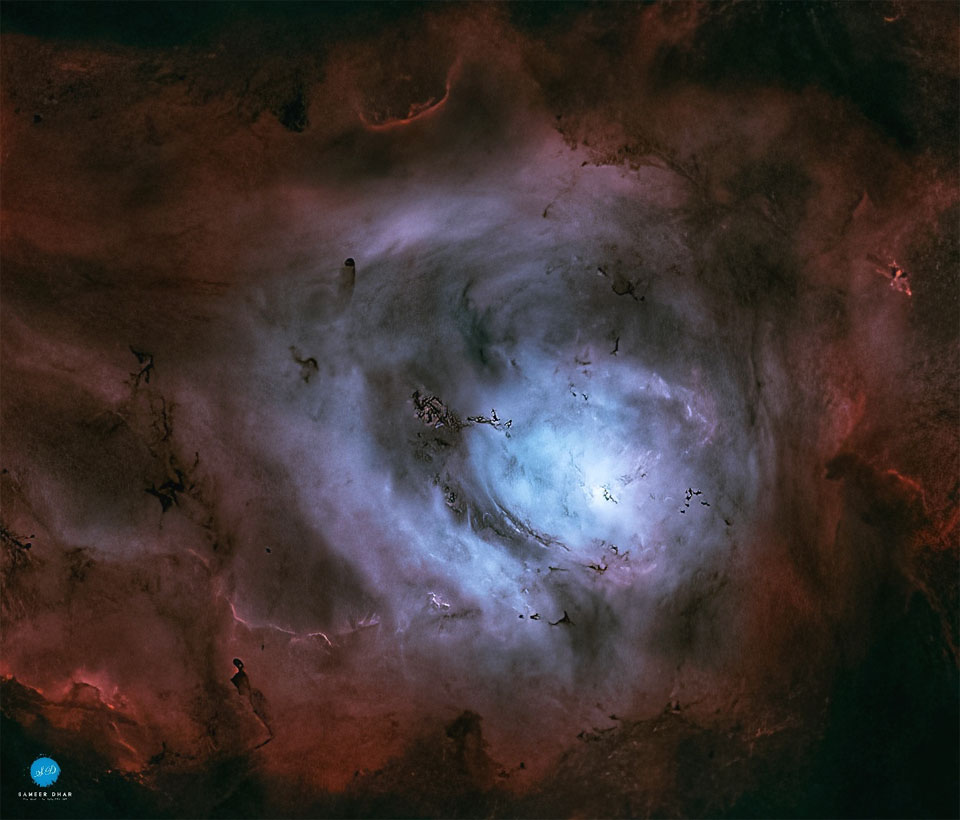2022年8月8日
The Lagoon Nebula without Stars
Image Credit & Copyright: Sameer Dhar
Explanation: Ridges of glowing interstellar gas and dark dust clouds inhabit the turbulent, cosmic depths of the Lagoon Nebula. Also known as M8, the bright star forming region is about 5,000 light-years distant. But it still makes for a popular stop on telescopic tours of the constellation Sagittarius, toward the center of our Milky Way Galaxy. Dominated by the telltale red emission of ionized hydrogen atoms recombining with stripped electrons, this stunning, deep view of the Lagoon is nearly 100 light-years across. Right of center, the bright, compact, hourglass shape is gas ionized and sculpted by energetic radiation and extreme stellar winds from a massive young star. In fact, although digitally removed from the featured image, the many bright stars of open cluster NGC 6530 drift within the nebula, just formed in the Lagoon several million years ago.
Tomorrow’s picture: leaving earth
移除恒星后的礁湖星云
影像提供与版权: Sameer Dhar
说明: 明亮的星际云气脊和黝黑的尘埃云,交织在礁湖星云狂乱的内部深处。这个又称为M8的明亮恒星形成区,离我们约有5,000光年远。纵然很远,然而以望远镜巡礼我们银河系中心的人马座之时,它仍是一个热门的目标。在这幅呈现宽约100光年的礁湖星云中心区之深空影像里,电离化氢原子和逸失的电子复合时所发出的特征性红光辐射,是最主要的色泽。此外,在一颗大质量年轻恒星的高能辐射和强烈恒星风之电离化和雕塑下,形成了影像中右方的沙漏状云气。在这幅主题影像里,数百万年前刚形成于星云内的疏散星团NGC 6530之亮星,已运用数字技术加以移除。
明日的图片: leaving earth







